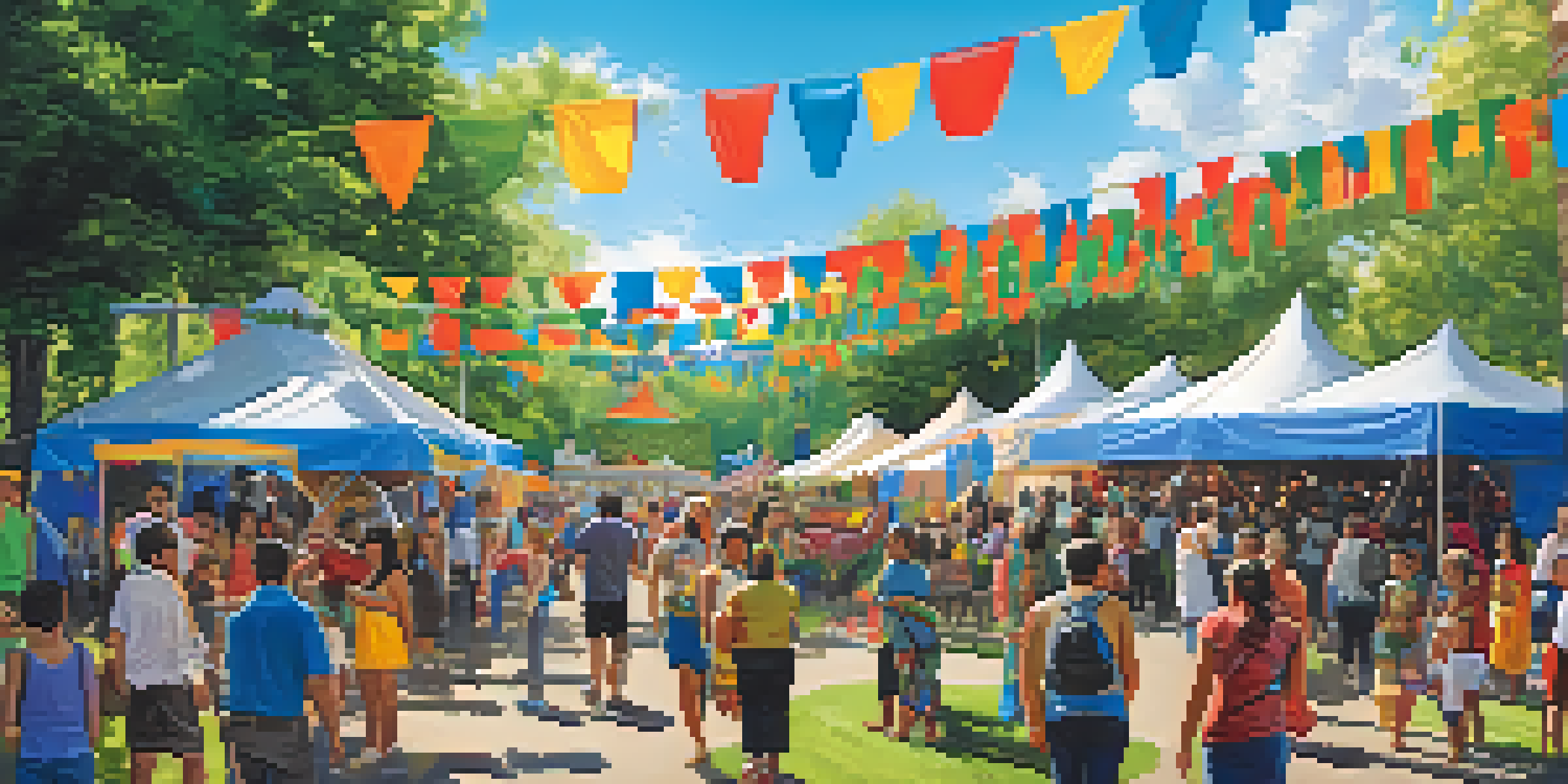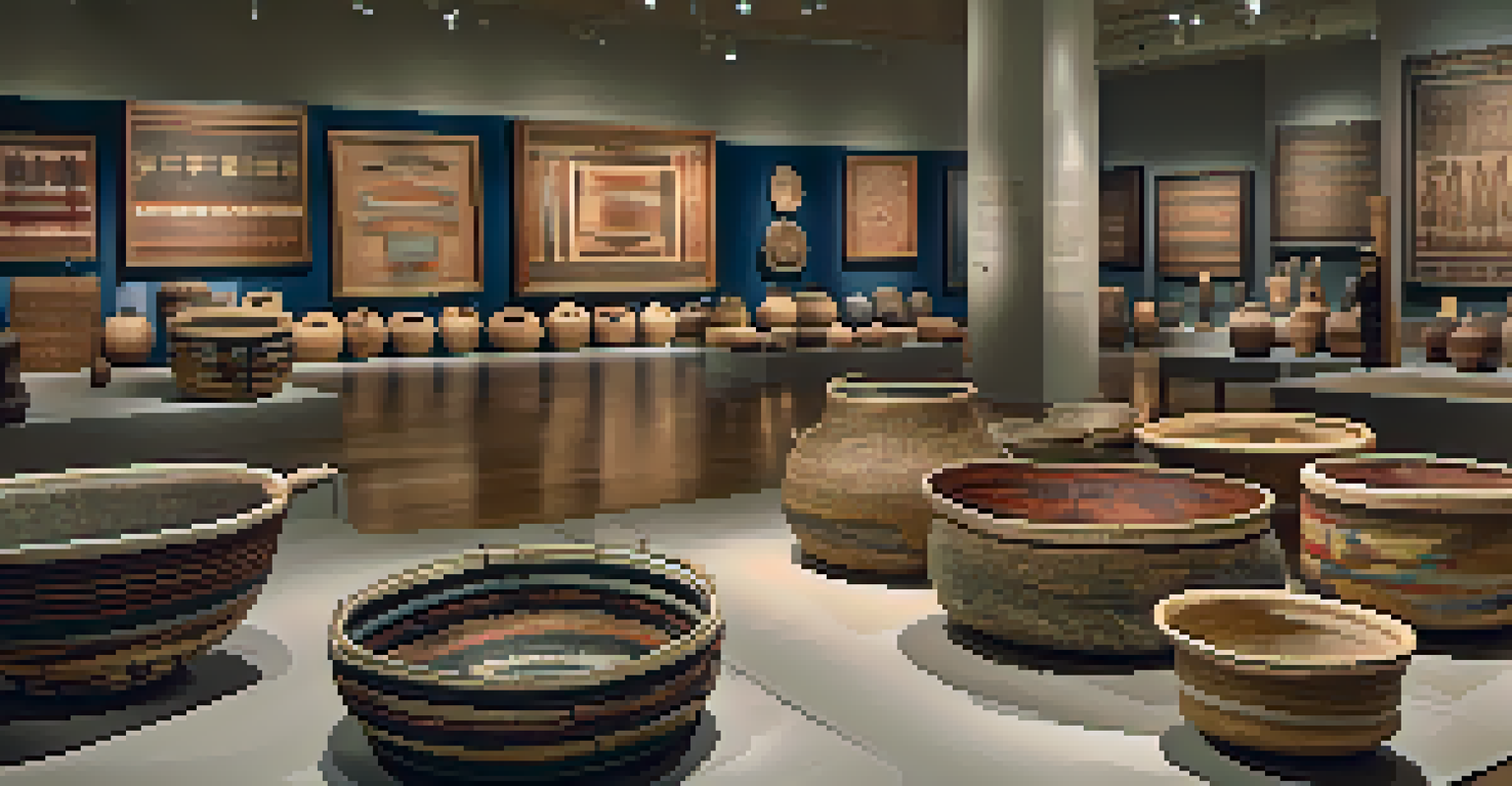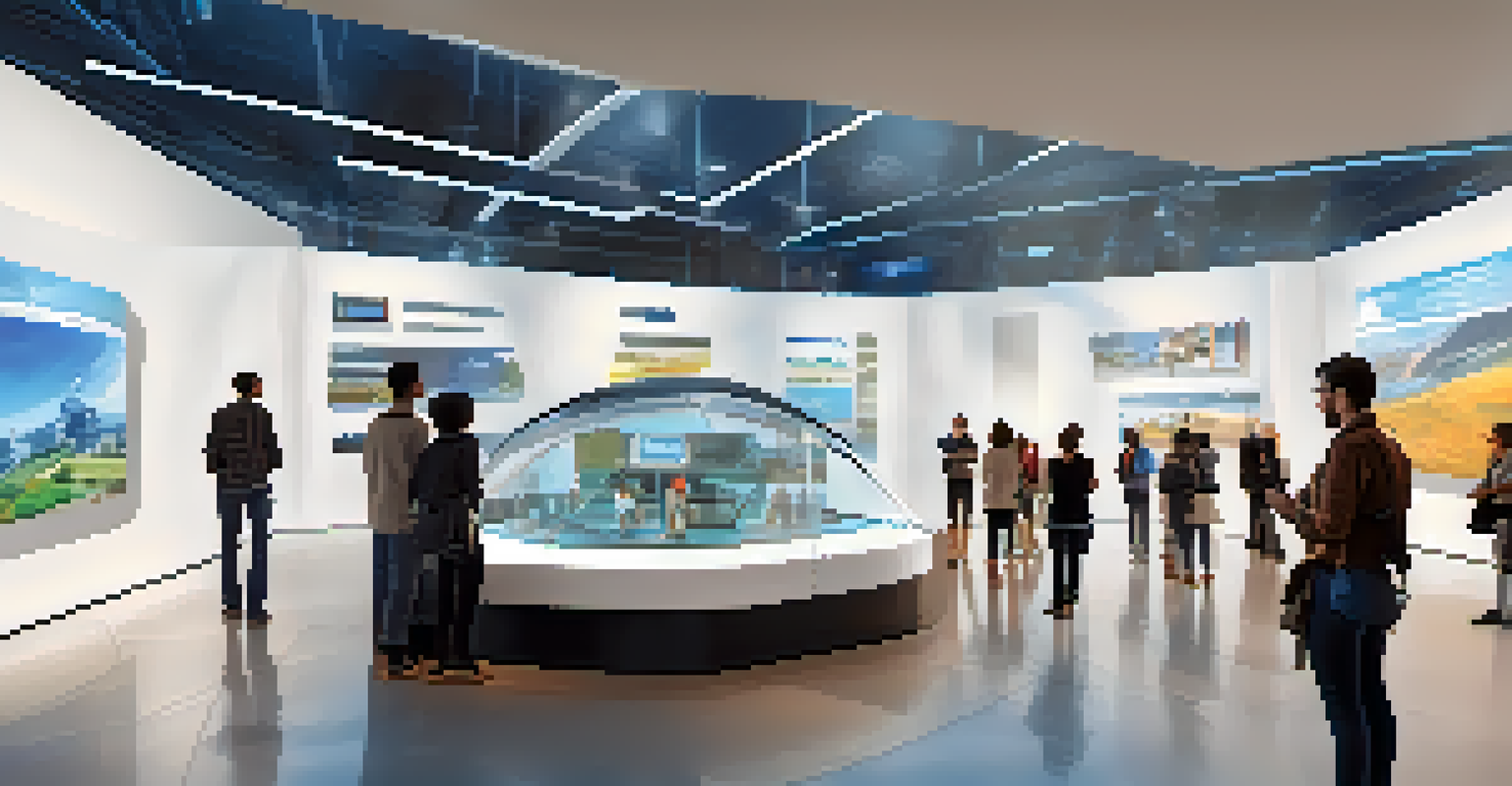The Role of Museums in Celebrating Oregon's Cultural History

The Importance of Cultural Preservation in Oregon
Oregon's rich cultural tapestry is woven from diverse communities and histories, making preservation vital. Museums serve as guardians of this heritage, ensuring that stories of different peoples are not lost to time. From Native American traditions to the impact of early settlers, these institutions encapsulate the essence of Oregon's identity. By preserving artifacts and narratives, museums help us understand where we come from and how we evolved.
Preservation of one's own culture does not require contempt or disrespect for other cultures.
The act of preserving culture goes beyond merely displaying artifacts; it involves active engagement with the community. Local museums often collaborate with indigenous groups and cultural organizations to ensure authentic representation. This partnership fosters a deeper connection between the museum and the public, making history relevant to contemporary audiences. In essence, cultural preservation within museums is a living dialogue between the past and present.
Moreover, cultural preservation in museums encourages education and awareness. By hosting exhibitions, workshops, and discussions, museums invite visitors to explore Oregon's multifaceted history. This educational role is crucial in fostering appreciation and respect for the diverse cultures that have shaped the state. Ultimately, museums not only celebrate Oregon's past but also empower future generations to cherish and uphold this rich heritage.
Museums as Community Hubs for Cultural Engagement
Beyond their role as historical repositories, museums in Oregon function as vibrant community hubs. They invite locals and visitors alike to engage with culture through various programs and events. Think of them as gathering places where people can come together to celebrate their shared heritage, attend festivals, or participate in educational workshops. This sense of community is essential in fostering a deeper understanding of Oregon's cultural landscape.

Events like cultural festivals, art shows, and interactive exhibits turn museums into lively spaces that reflect the community's spirit. For instance, the Oregon Historical Society often hosts events that highlight specific cultural narratives, allowing attendees to connect with their history in meaningful ways. These initiatives not only attract visitors but also create a sense of belonging among community members. It’s a beautiful reminder that museums can be places of joy and celebration.
Cultural Preservation is Essential
Oregon's museums play a crucial role in preserving diverse cultural narratives, ensuring that the stories of various communities are not lost over time.
By engaging the community, museums also play a crucial role in addressing contemporary issues tied to cultural identity. They provide a platform for discussions around social justice, representation, and inclusion. Through these conversations, museums help cultivate a more informed and empathetic public. In this way, they transcend their traditional role, becoming active participants in the ongoing dialogue about culture and identity in Oregon.
Highlighting Indigenous Cultures and Histories
One of the most significant aspects of Oregon's cultural history is its Indigenous heritage. Museums play a vital role in honoring and showcasing the stories, traditions, and art of Native American tribes in the region. By curating exhibitions that celebrate these cultures, museums contribute to a more comprehensive understanding of Oregon's past. This effort is essential for fostering respect and recognition of Indigenous peoples' contributions.
Museums are not just about the past; they are about the future and the dialogue we create around our shared human experience.
For example, the Portland Art Museum features a collection of Native American artifacts that tell powerful stories of resilience and creativity. Such exhibits not only educate visitors about the rich cultural heritage of these tribes but also serve as a reminder of their ongoing presence and influence. This visibility is crucial in combating stereotypes and promoting a more nuanced narrative of Indigenous history.
Additionally, many museums collaborate with Native communities to ensure accurate representation and interpretation of their cultures. These partnerships empower Indigenous voices and provide a platform for storytelling that is often overlooked in mainstream narratives. By doing so, museums help to preserve these vital histories and foster a sense of pride among Indigenous peoples, ensuring that their stories continue to be told and celebrated.
Promoting Understanding Through Temporary Exhibitions
Temporary exhibitions in Oregon's museums serve as dynamic platforms for exploring various cultural themes. These exhibits often focus on specific events, communities, or artistic movements, allowing visitors to delve deeper into particular aspects of Oregon's cultural history. For example, an exhibition on the Japanese internment during World War II can spark crucial conversations about civil rights and resilience. Such focused explorations can enhance our understanding of complex issues.
Moreover, temporary exhibitions often feature collaborations with local artists and historians, enriching the visitor experience. These partnerships bring fresh perspectives and highlight the voices of contemporary creators, bridging the gap between past and present. Visitors not only learn about historical events but also see how these narratives continue to shape modern Oregon. It's like connecting the dots between history and current cultural expressions.
Museums Foster Community Engagement
By hosting events and programs, Oregon's museums serve as vibrant hubs that connect locals and visitors, fostering a deeper understanding of the state's cultural landscape.
These exhibitions also encourage repeat visits, as there's always something new to discover. By rotating exhibits, museums keep their offerings fresh and exciting, engaging a diverse audience. This commitment to showcasing a wide array of cultural stories ensures that everyone finds something relatable, fostering a deeper connection to Oregon's rich tapestry of history.
Educational Programs That Inspire Future Generations
Education is at the heart of what museums do, especially when it comes to inspiring young minds. Oregon's museums offer a variety of educational programs tailored for students of all ages, from hands-on workshops to guided tours. These programs ignite curiosity and encourage critical thinking about history and culture, equipping the next generation with the knowledge they need to appreciate their heritage. It's like planting seeds of understanding that will grow over time.
Through interactive learning experiences, students can engage with artifacts and stories in a way that textbooks alone cannot provide. For instance, a local museum might host a program where students can handle replica tools used by early settlers, fostering a tangible connection to the past. Such experiences make history come alive, allowing students to see themselves as part of that narrative. This engaging approach can be the key to fostering a lifelong love for learning.
Additionally, many museums collaborate with schools and educational organizations to create curriculum-based programs that align with state standards. This partnership not only enhances classroom learning but also encourages field trips to museums, allowing students to experience culture firsthand. By integrating museum visits into education, we ensure that cultural history becomes a fundamental part of students' lives.
The Role of Technology in Museum Experiences
As technology continues to evolve, so too do the ways in which museums engage with visitors. Oregon's museums are increasingly incorporating digital tools to enhance the visitor experience, making learning more interactive and accessible. For example, augmented reality apps can bring exhibits to life, providing additional context and storytelling elements that enrich the overall experience. It's like having a personal guide right in your pocket!
Virtual exhibits are another innovative way to reach audiences beyond the museum walls. During the pandemic, many institutions adapted by offering online tours and resources, allowing people to connect with Oregon's cultural history from the comfort of their homes. This shift not only broadened access but also opened new avenues for engagement, demonstrating that museums can adapt to the needs of their audience.
Technology Enhances Museum Experiences
Innovative digital tools, such as augmented reality and virtual exhibits, are transforming how visitors interact with Oregon's cultural history, making it more accessible and engaging.
Moreover, social media has become a powerful tool for museums to share their stories and connect with younger audiences. Through platforms like Instagram and TikTok, museums can showcase artifacts in creative ways, sparking interest and encouraging visits. By embracing technology, Oregon's museums are redefining what it means to engage with culture, ensuring they remain relevant in an ever-changing world.
Museums as Stewards of Cultural Dialogue
Museums in Oregon are not just about preserving the past; they are also vital players in fostering cultural dialogue. By creating spaces for discussion and reflection, these institutions encourage visitors to engage with challenging topics related to identity, race, and history. Programs like panel discussions and community forums provide platforms for diverse voices, creating opportunities for healing and understanding. It's a reminder that museums can be places of growth and transformation.
This role as stewards of cultural dialogue is especially important in today's society, where conversations about history and identity are more relevant than ever. By facilitating these discussions, museums help to bridge gaps between different communities and perspectives. They encourage visitors to confront difficult truths while also celebrating shared values and aspirations. In this way, museums become catalysts for positive change.

Furthermore, by promoting inclusivity and representation in their programming, museums can empower marginalized voices. This commitment to diversity enriches the cultural narrative of Oregon, allowing for a more comprehensive understanding of its history. Ultimately, museums serve as vital spaces for reflection, learning, and dialogue, shaping the cultural landscape of Oregon for generations to come.